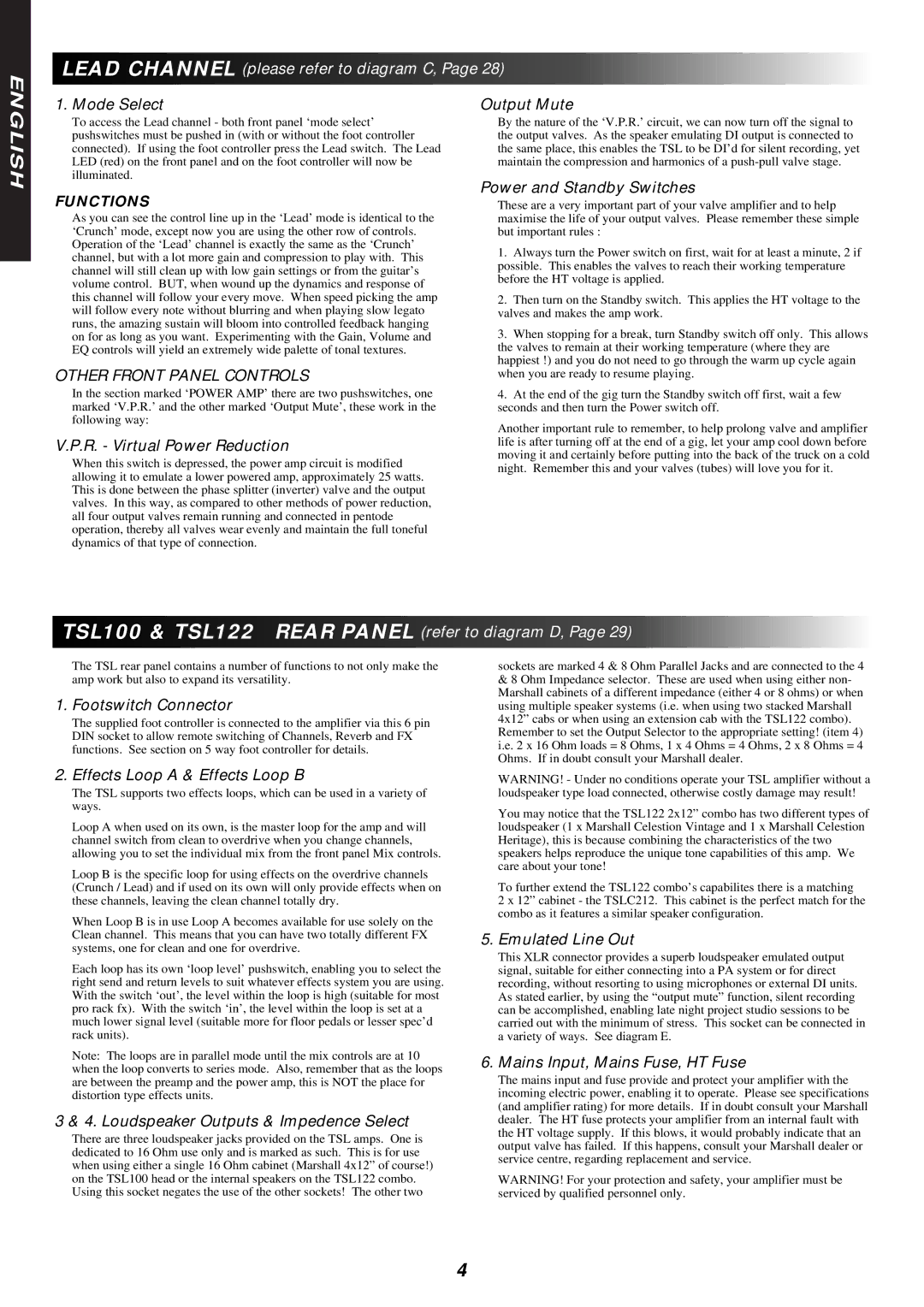TSL100, TSL122 specifications
Marshall Electronics has a longstanding reputation in the video and audio equipment industry, and its TSL series, particularly the TSL122 and TSL100 models, exemplifies their commitment to innovation and quality. These devices, primarily designed for broadcast and post-production environments, are engineered to meet the demands of professional users who require precise monitoring and reliable performance.The TSL122 is a versatile 12-inch full-HD monitor that offers an exceptional level of detail and accuracy. It features a high-resolution LCD screen capable of displaying various input formats, making it suitable for different types of video production. One of its standout characteristics is the built-in waveform and vector scope, which provide essential tools for color grading and signal monitoring, allowing users to achieve optimal image quality. Additionally, the TSL122 supports a range of connectivity options, including SDI, HDMI, and composite inputs, ensuring compatibility with a wide array of video sources.
On the other hand, the TSL100 is a more compact option, featuring a 10-inch display designed for portability without compromising on performance. Like the TSL122, it offers various input formats and comes equipped with advanced monitoring features, making it perfect for field production and studio environments. Its lightweight design and robust construction make it easy to transport, while still providing the necessary tools for video analysis and quality control.
Both models leverage advanced technologies such as high dynamic range (HDR) and color reproduction capabilities to ensure that users can achieve consistent and accurate visuals. This is vital in production and post-production settings where color accuracy plays a crucial role in storytelling and presentation.
Additionally, these monitors are designed with user-friendly interfaces, facilitating smooth operation and quick access to key settings. This ease of use is complemented by customizable presets, allowing operators to tailor their monitoring experience to specific production needs.
In summary, the Marshall TSL122 and TSL100 monitors are excellent choices for professionals seeking reliable, high-quality monitoring solutions. Their robust feature sets, advanced technologies, and ergonomic designs make them ideal for a wide range of applications, from live broadcasting to film and television production. Whether in a studio or on location, these monitors provide the precision and reliability that industry professionals demand.

